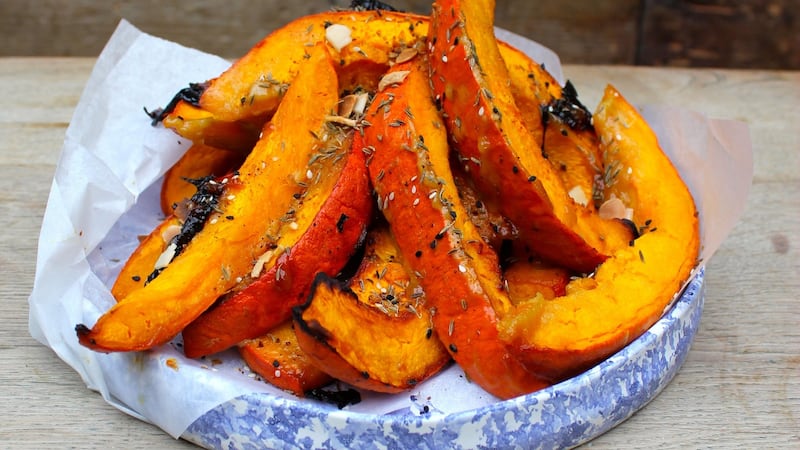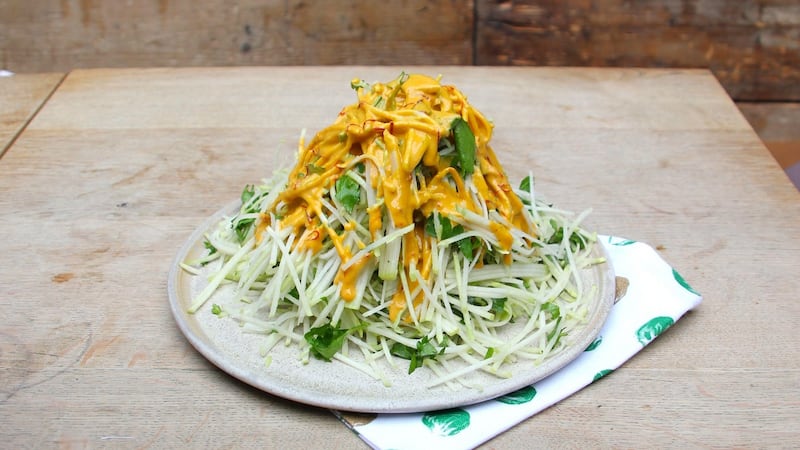I'm a bit of a chicken, scared of everything, kinda jumpy. Some might say I'm not the sharpest tool in the shed and I don't claim to be either. But in 1998, I got my hands on a copy of Simon Hopkinson's cookbook Roast Chicken and Other Stories and that was one of those lightbulb moments for me. As he says, "any cook can produce a good dish from an old scrawny bag of a chook".
Nothing is better than a nice roast chicken with lemon. I developed a love for preserved lemons in the outdoor markets of Marrakech while backpacking in Morocco. We were much younger then and vegetarian; we've all gone through that patchouli and incense stage, haven't we? I love them in salads, stuffed into fish and, most of all, in a good roast chicken, rubbed down with olive oil and thyme. This is pretty basic but done right it will blow your mind.
We were never short of a chook or two growing up in New Zealand. My granny kept a flock of up to 200 at a time on her farm. She used to wring their necks, with a hand-rolled cigarette hanging from her mouth, saving the blood for the vegetable garden (it makes amazing fertiliser). She was always winning prizes for those veggies – you can’t beat an immaculately groomed leek.

With Kai being a highly seasonal restaurant, we are up to our elbows in root vegetables at this time of year. There are sinks and buckets full of them, the wonkier the better. They come from an organic farm in Offaly, we like to work with them through the seasons and keep things fresh in the veg department.
Kohlrabi is another of those knobbly, unattractive vegetables. The first time I’d ever heard of it was in Noma restaurant in Copenhagen, where they described it as a Nordic coconut and served it with bee pollen as a delicious drink.
In the other recipe below we use some white miso, which is a mix of soybeans and koji. You can also make it with barley or seaweed – the trendy kids in the Fumbally have some amazing varieties. Get out and explore the Asian supermarkets or your Polski Skleps for treasures such as miso or milk kefir, and amazing pickles – it’s all about gut health this year, folks.
THYME ROASTED CHICKEN WITH PRESERVED LEMON

Ingredients
1 free range whole chicken (about 1.5kg)
75ml rapeseed or olive oil
2 preserved lemons
1 packet fresh thyme
30g sumac or za'atar
Salt and pepper to taste
Method
Preheat an oven to 200 degrees Celsius.
Remove the chicken from the fridge and let it come up to room temperature. Stuff with the preserved lemons and thyme stalks, saving the leaves for the outside of the bird.
Mix the oil with the thyme leaves and sumac and rub all over the skin of the chicken and season with salt and pepper.
Transfer the bird onto a rack in a suitably sized roasting tray. Lower the oven temperature to 170 degrees Celsius and pop the bird inside.
Cook for 120 minutes, or until the juices run clear.
Cover with foil and rest for at least 10 minutes before serving.
ROASTED PUMPKIN, WHITE MISO AND CARAWAY

This super quick roasted pumpkin is flavoured with miso and caraway, which makes it sweet and savoury. It is an excellent side dish for fish and, of course, chicken. You can keep your pumpkin seeds for toasting too, they make a nice little snack to go with a glass of wine.
Ingredients
Serves 4
1 small Hokkaido pumpkin or quarter of a Crown Prince pumpkin
Marinade
50g white miso
30g tamari
20ml cider vinegar
20ml olive oil
10g roasted caraway seeds
Salt and pepper to taste
Method
Preheat an oven to 180 degrees Celsius. Line a large roasting dish with parchment.
Open the pumpkin and remove all the seeds. There is no need to peel if you are using a Hokkaido pumpkin, best to peel if you have chosen a Crown Prince. Slice your pumpkin in little half-moon shapes and place them in a large stainless steel bowl.
Whisk all the marinade ingredients together and pour over the pumpkin slices, toss them together well. Pour into the roasting dish and pop it into the preheated oven for 25-30 minutes or until soft.
KOHLRABI WITH TAHINI AND SAFFRON DRESSING

Kohlrabi is not the handsomest of vegetables, but it tastes better than it looks. It comes in green or purple and though it looks like a root vegetable, it is actually a brassica related to the cabbage and sprouts. Don’t throw out the leaves, you can use them in the same way as you would spinach.
Ingredients
Serves 4
1 large pinch of saffron
100ml tahini
1 clove of garlic, finely minced
30g honey or maple syrup
Salt and pepper to taste
2 large kohlrabi, purple or green
2 large eating apples, Granny Smiths are ideal for this
Juice of 2 lemons
50g fresh dill
50g parsley
Method
Infuse the saffron in a couple of tablespoons of boiling water. Let this rest for about 10 minutes. Add the tahini, garlic and maple syrup and blend to a creamy consistency. Season.
Use a Japanese mandolin to cut match stick sizes of both the apples and kohlrabi. Toss in a bowl with the lemon juice and the fresh herbs. Spoon over your rich, nutty, tahini dressing and serve immediately.



















